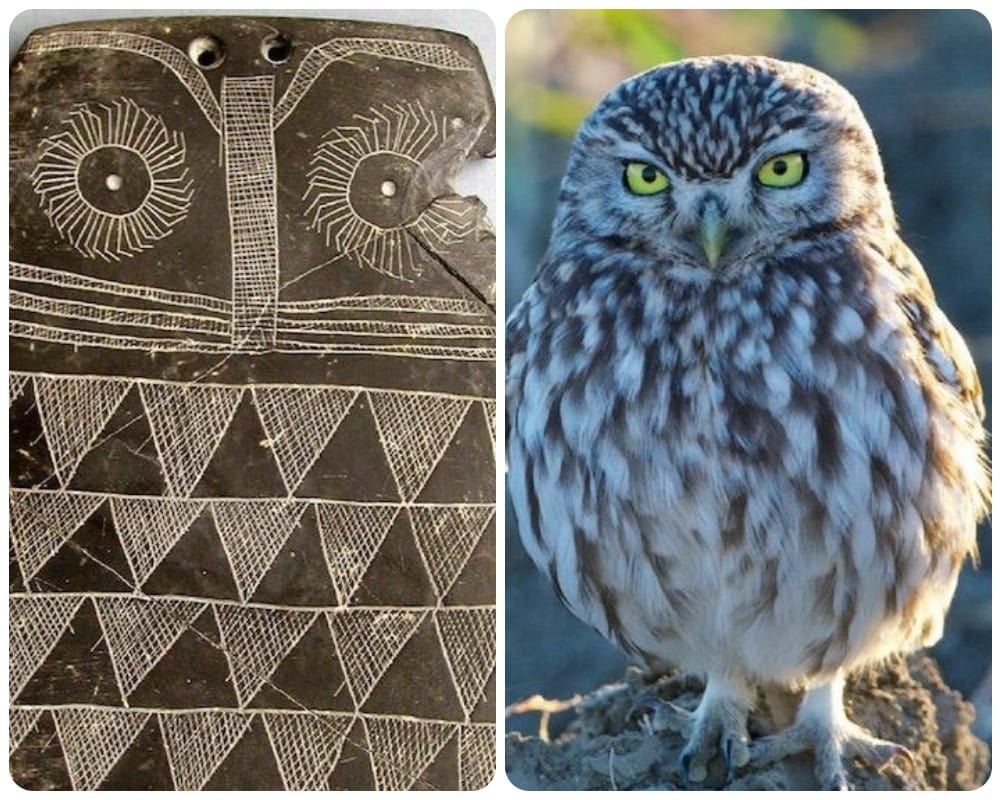When archaeologists found ancient palm-sized slate-carved owl figures on the Iberian Peninsula, they thought those were sacred objects used for rituals, representing ancient deities. But a new study has revealed that those thousands-year-old cartoon-like figures actually could be amulets or toys for children.
The Owl Figures

A team of researchers from CSIC or the Spanish National Research Council examined 100 engraved slate owl plaques. Over the past years, approximately 4,000 such owl figurines have been collected at pit and tomb sites scattered throughout the Iberian Peninsula. All of the figures date to the Copper Age or 3500 B.C. – 2750 B.C. and feature noticeable characteristics of the bird, like etchings of a beak, two carved circles for the large frontal eyes, plumage, wings, etc. There are also two small perforations at the top of each figure, likely used for decorating with actual owl feathers.
The New Study
While examining the 100 samples, the researchers’ first impression was that the engravings were pretty simple. According to Juan J. Negro, the lead author of the study and a biologist in the Department of Evolutionary Ecology at the CSIC, the carvers of those little owl figures didn’t invest that much skills or time into making them. Another common feature among the models was they all were made using slate, a widely-used soft material predominantly composed of chlorite, illite, and quartz. The malleability of slate makes it easy to carve with any pointed tool made of copper, quartz, or flint. Also, for centuries, slate has been known to be the first material children get their first handwriting lesson on. So the researchers concluded that the owl figures were likely engraved by children, who were possibly just beginning their carving lesson.
The Reason

Though there’s no solid explanation of what inspired the Copper Age kids in that part of the world to focus on owls instead of any other bird, researchers believe it is because of the common sighting of the predatory bird in urban areas. According to Negro, during that time, the two most abundant owl species in the Iberian Peninsula region were the long-eared owl (Asio Otus) and the little owl (Athene Noctua). Also, children for ages have found the features of this iconic bird very striking, so much so that they generally don’t need a model to draw a picture of an owl. To test this theory, Negro and his team compared the images of owls drawn by modern-day children with the ancient Copper Age carvings, and the result was eerily similar!